Submitted by WA Contents
MVRDV reimagines former Hangzhou Oil Refinery Factory with cylindrical art and science museum
China Architecture News - Jun 01, 2023 - 16:05 3490 views
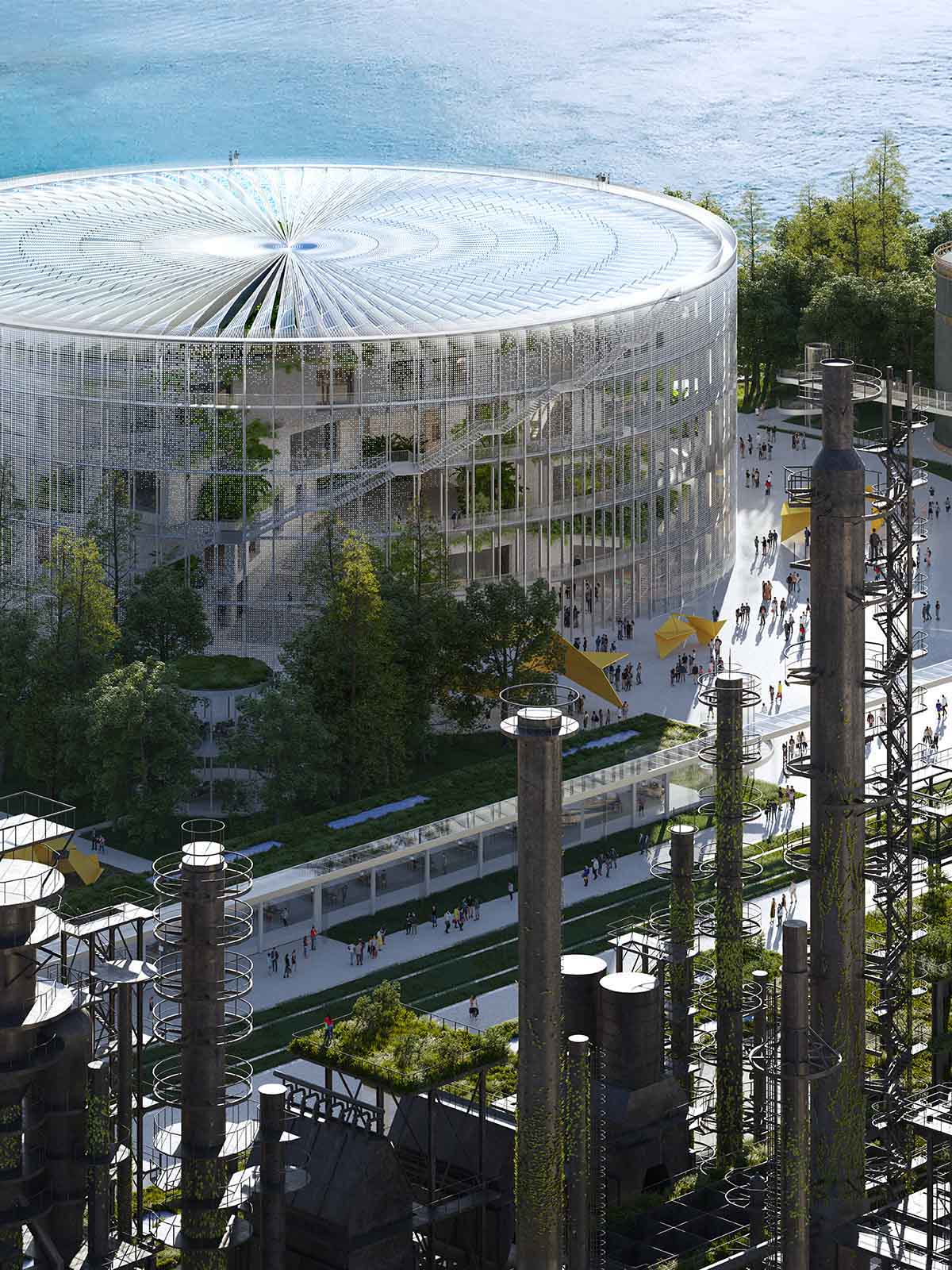
MVRDV has won a competition to transform a former Hangzhou Oil Refinery Factory Park into an art and science museum, where a former industrial district sits alongside the southern end of China’s Grand Canal.
The 17-hectare masterplan will include an eye-catching art and science museum sitting at the heart of masterplan, alongside offices, retail, and a wide variety of cultural experiences set in a green environment interwoven with the remnants of the past.
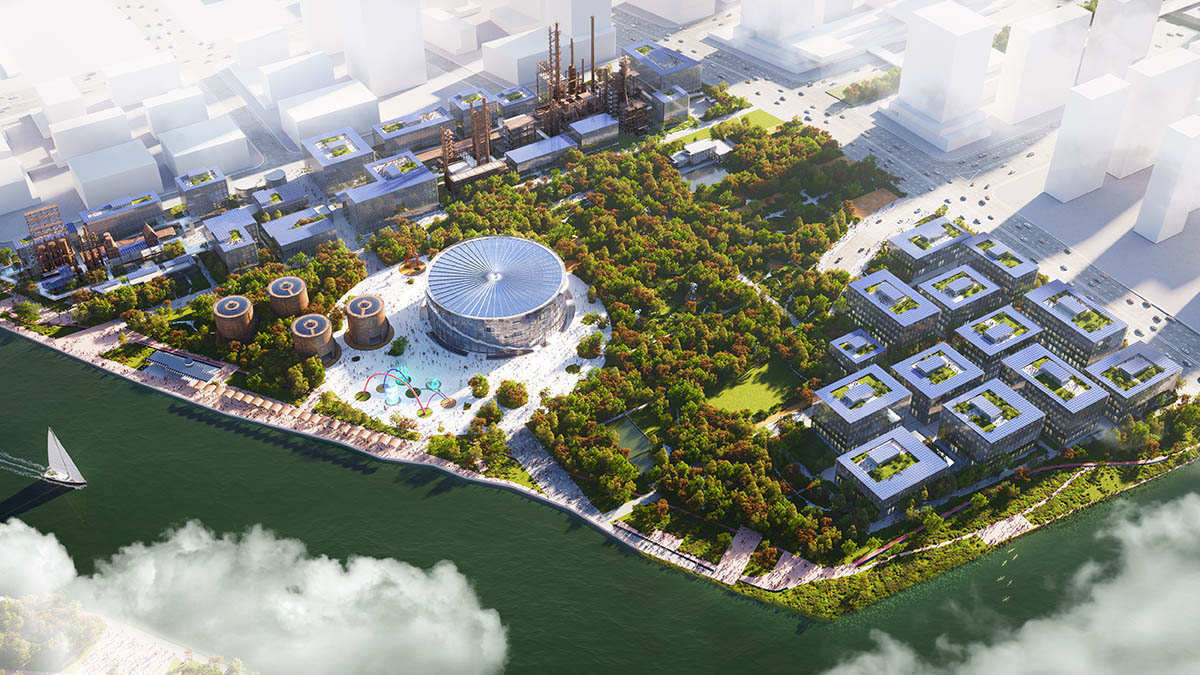
Image © MVRDV
"The Grand Canal – the world’s longest and one of the oldest man-made waterways – was, in part, constructed to strengthen economic connections between the south and the north of China," said MVRDV.
"Currently, China is taking steps to transform the Grand Canal along its entire length, turning this industrial infrastructure into a social amenity by allowing access to, and enjoyment of, the water to millions of people that live along the canal’s 1,700-kilometre length."
Hangzhou is positioned at the canal’s southern extent, and the roughly 18-hectare site, formerly occupied by an oil refinery, is emblematic of the canal’s history.
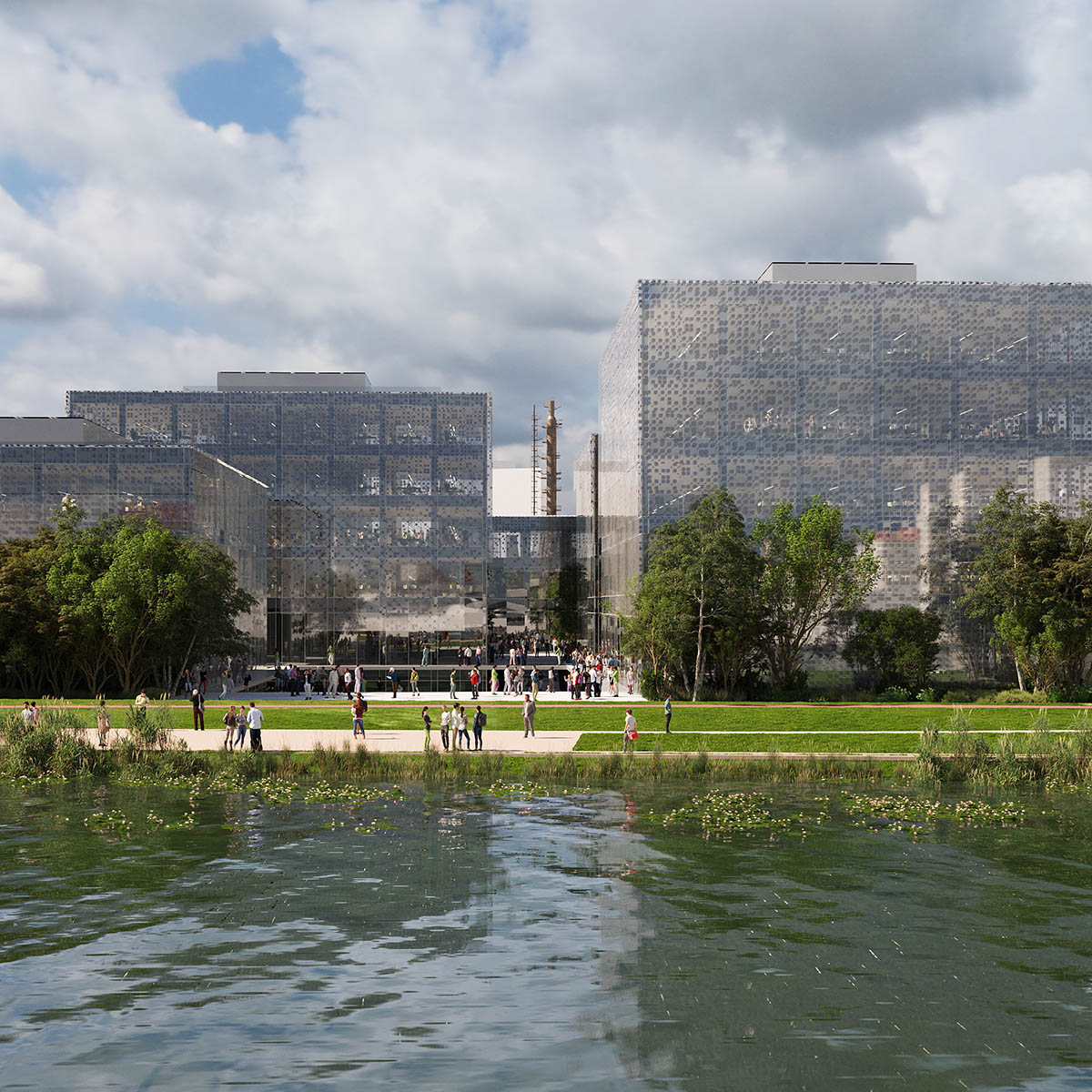
Image © MVRDV
The old factory is currently closed, while most of the structures that once occupied the site have been demolished, although a number of large refinery buildings and some oil storage drums remain.
Considering the canal’s future in mind, MVRDV’s design, which is developed in collaboration with Rotterdam-based landscape architecture studio Openfabric, aims to show the potential of industrial-to-cultural transformations.
In addition, the design is heavily based on renewable energy sources to serve as a prime example of the transition from fossil fuels to sustainable energy.
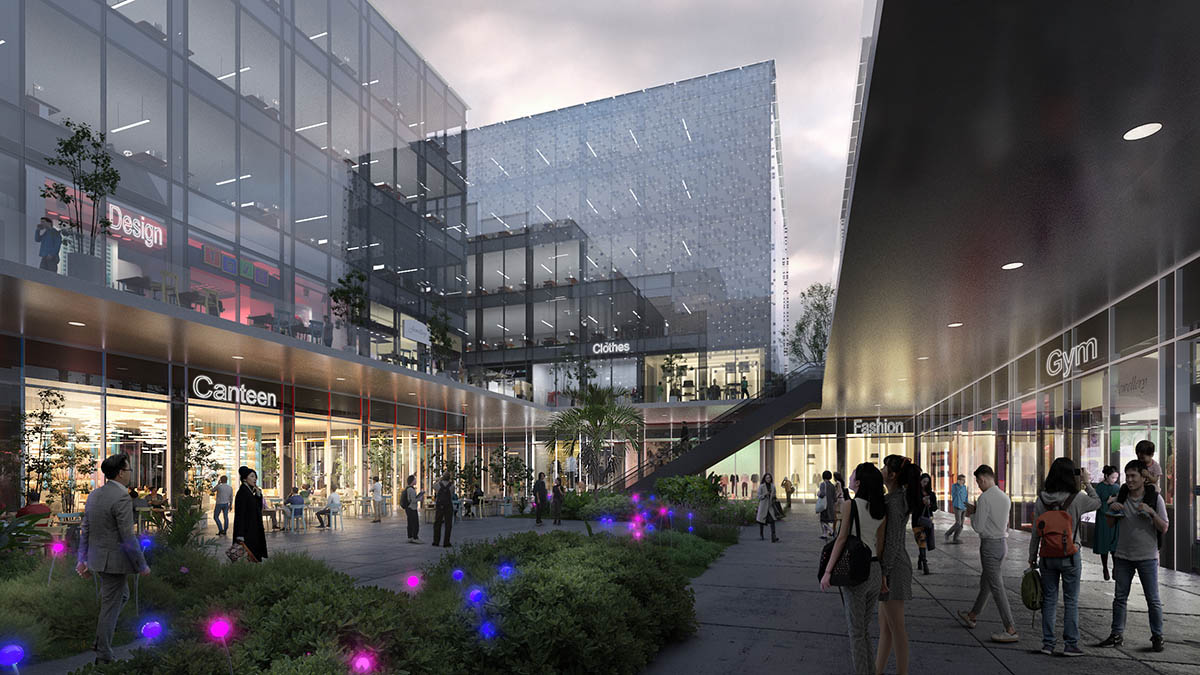
Image © MVRDV
An Art and Sci-tech Centre will be the centrepiece of the park, which will be a new museum that has a cylindrical exterior. The museum is imagined as a vastly scaled-up version of the silos which once peppered the site.
Due to its simple form of the exterior, the outer skin ıf the museum conceals a highly complex interior: atop a circular exhibition hall that is partially buried below ground level, an off-kilter stack of long, rectangular boxes house artists' studios, offices, and commercial spaces.
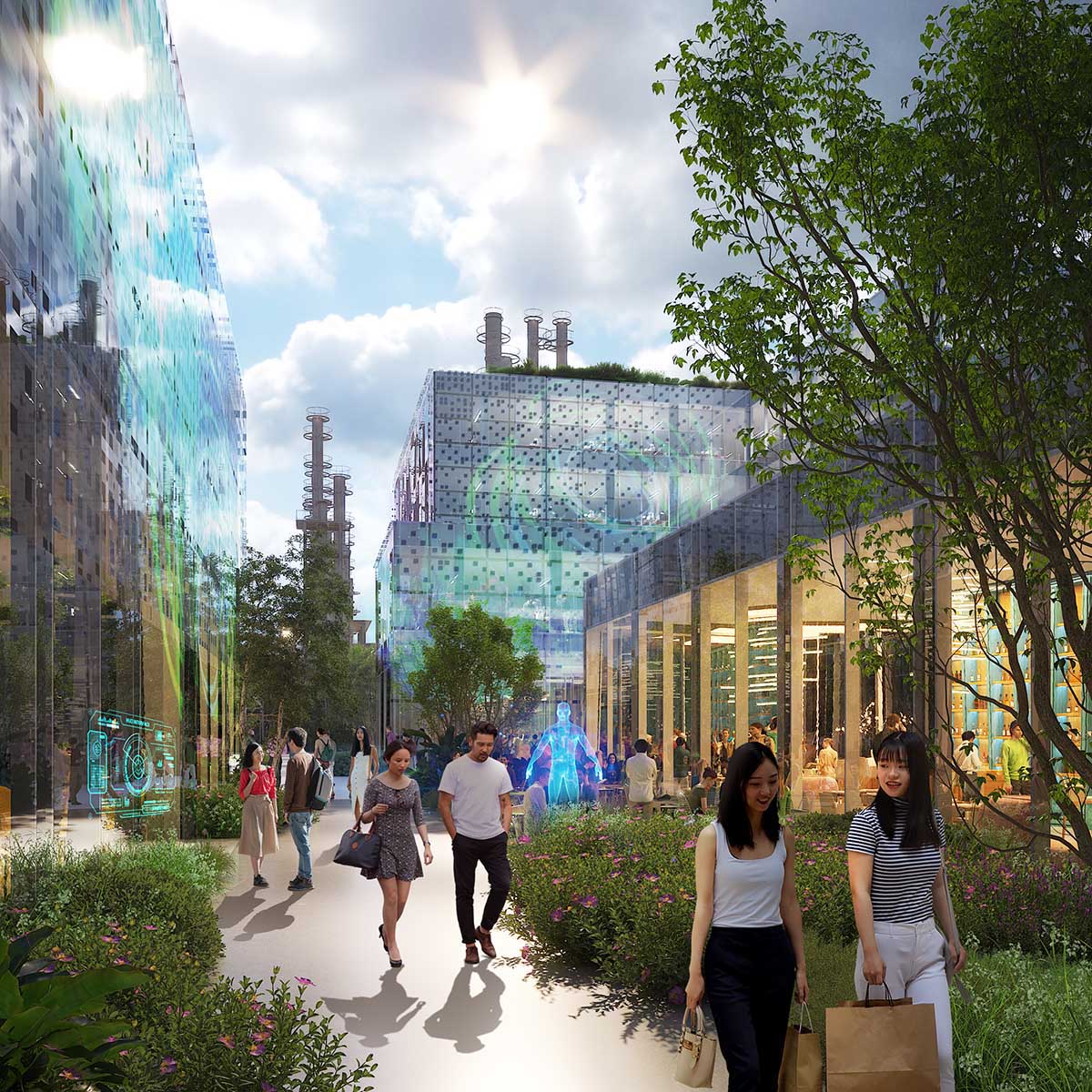
Image © MVRDV
The roofs of the boxes will house a series of terraces, connected by stairs and bridges, that serve to enliven this public area within the museum, enabling performances, large-scale installations, or events.
MVRDV conceives the façade of the museum as permeable, allowing breezes to penetrate the structure.
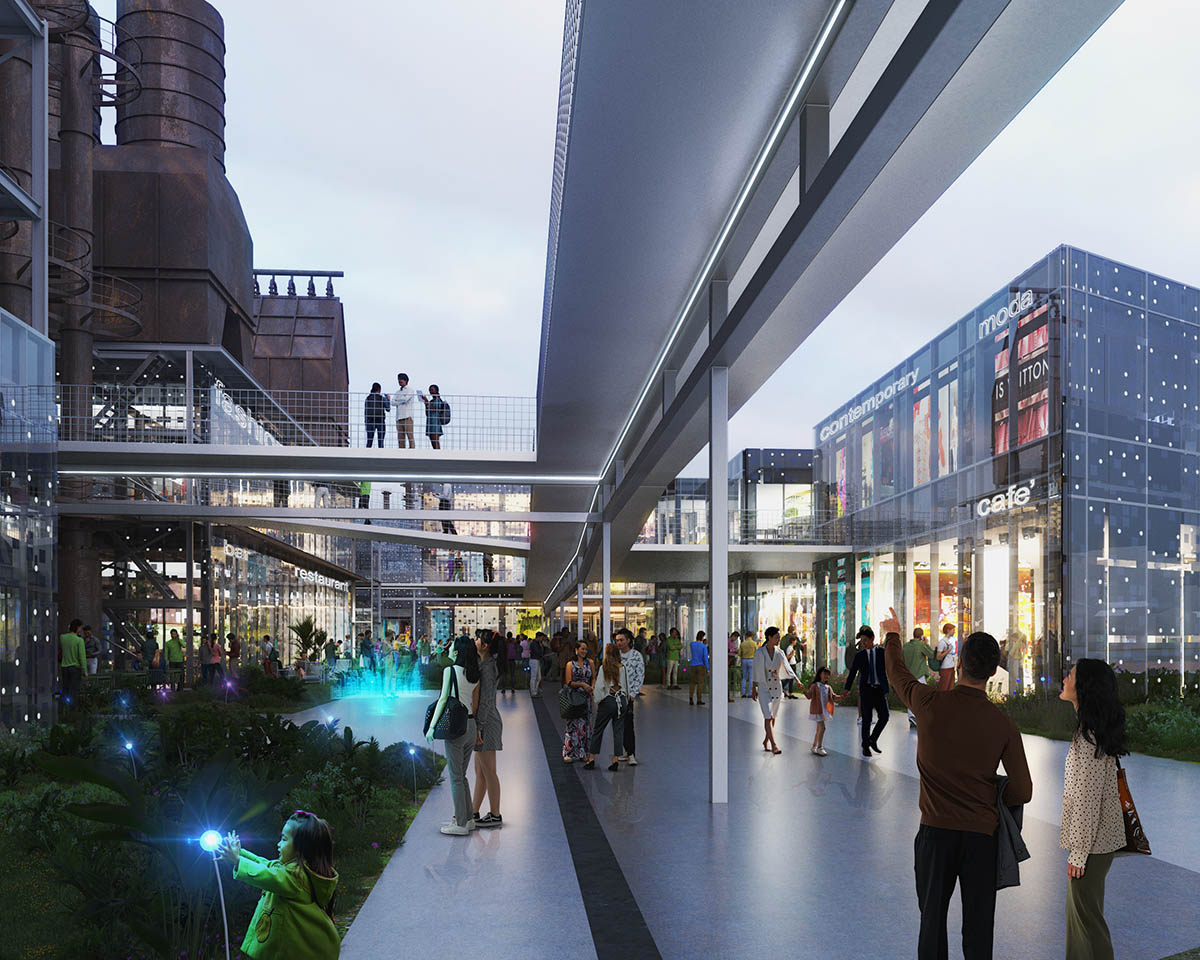
Image © MVRDV
The interior space is heated and cooled passively, fluctuating slightly in temperature depending on weather conditions. The façade also serves as a thermal buffer to dramatically reduce the energy required to fully heat and cool the building’s programmed spaces inside the boxes.
"With its appearance, the façade also cements the building’s status as the focal point of the park," MVRDV explained.
"Covered in an array of LEDs, the museum lights up at night to create a media façade that can be used to entertain visitors or to advertise the events taking place inside."

Image © MVRDV
In addition to media façade features and lights, the façade is enriched with thousands of small photovoltaic spots in order to generate energy from sunlight.
These small photovoltaic spots form a "solar painting" that was designed with a parametric approach, considering the solar exposure, prevailing winds, and most notable views to place a higher density of photovoltaics where they are most needed.
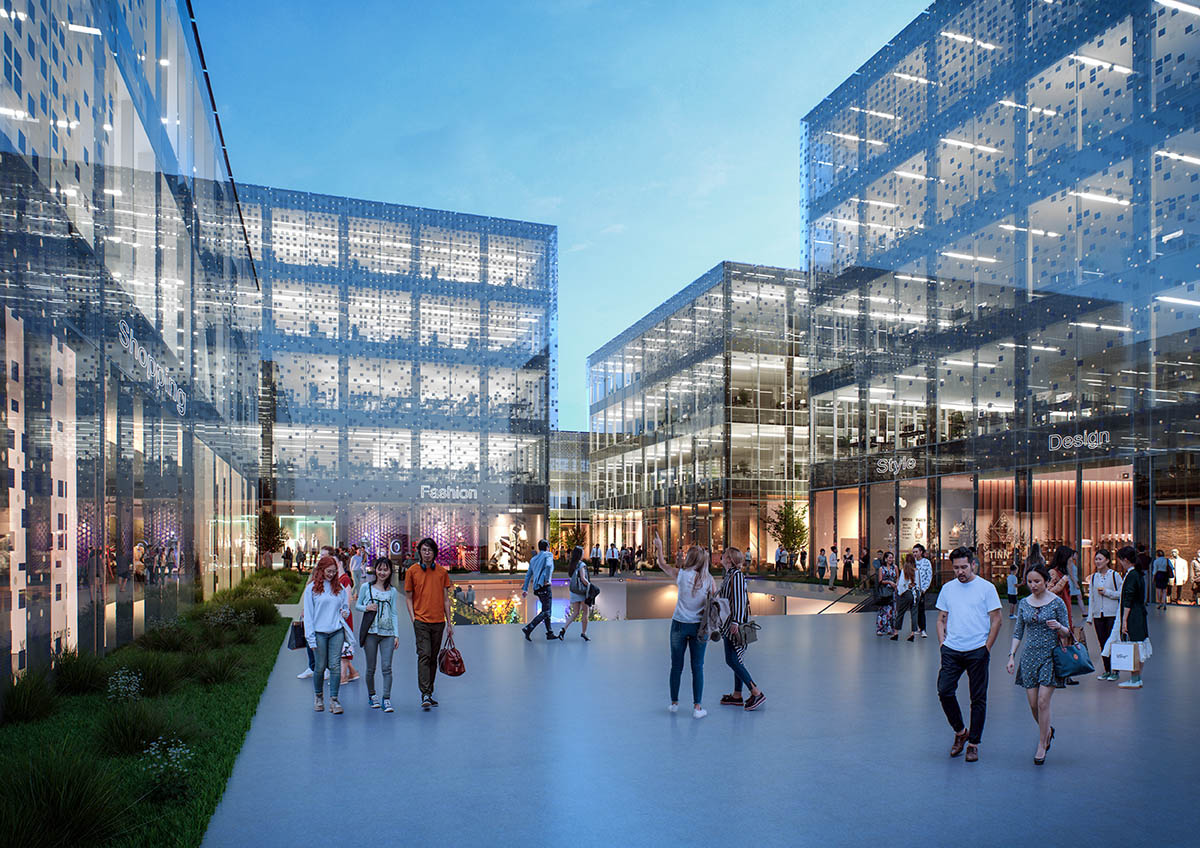
Image © MVRDV
"As a planet, we know we need to move on from oil on a massive scale," said MVRDV founding partner Winy Maas.
"But that raises the question, what should we do with all this infrastructure that was created? It is somehow, at the same time, tempting to make a clean break with history, and romantic to imagine a future where we build upon the ruins of the past," Maas continued.
"With this project we do both: we incorporate the old industrial structures, while newly built elements – which are clearly distinguishable from the old – show us a better, more sustainable future."
"The old ‘fossils’ turn into energetic drums," Maas added.
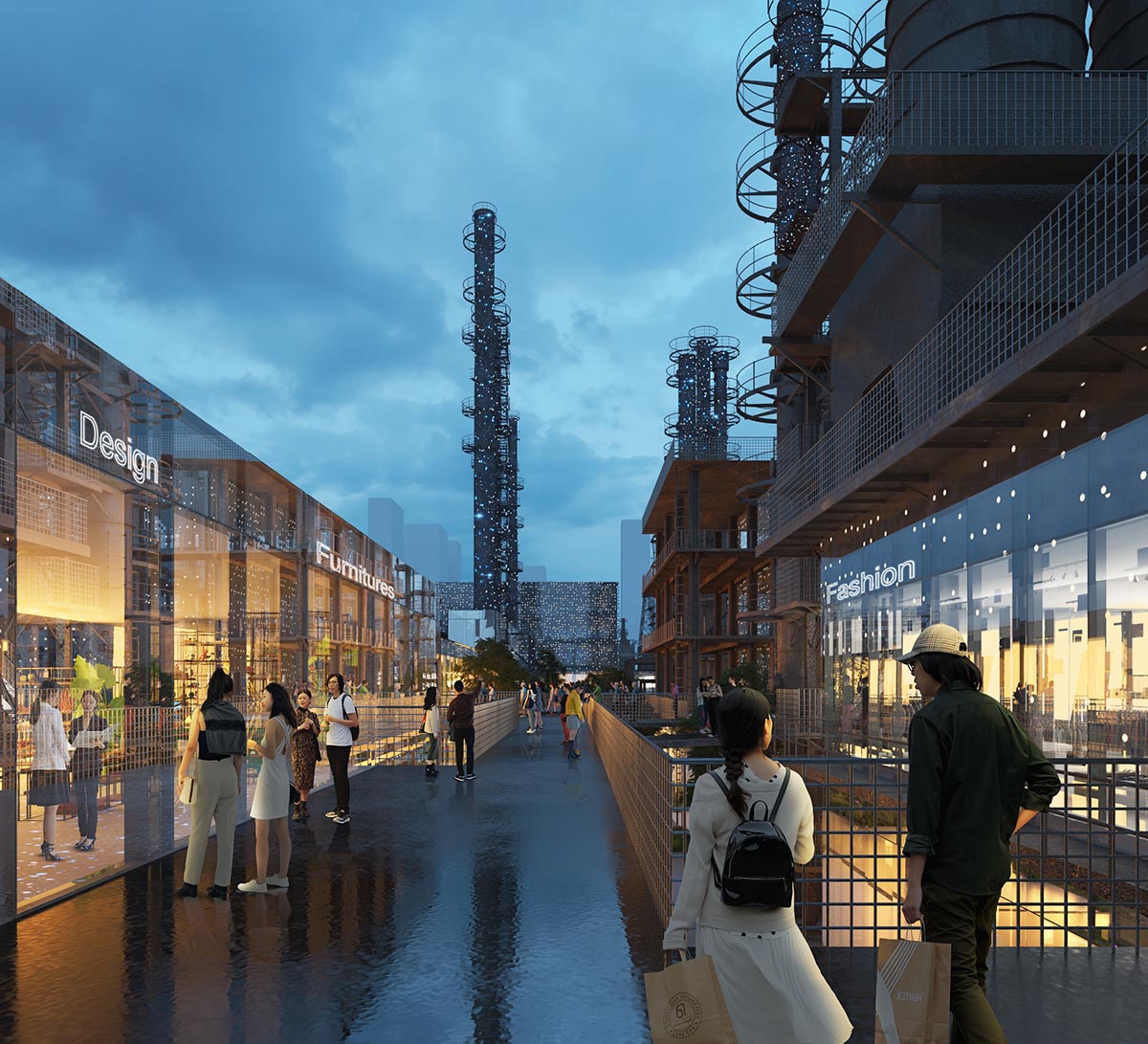
Image © MVRDV
In the rest of the park, the studio maintains the existing structures and transform them into offices or retail spaces.
"Many of the structures that have already been demolished are recreated with a modern approach – taking the same dimensions as the previous structures, but built with glass and using the same photovoltaic spots that are used on the museum’s façade," the studio continued.
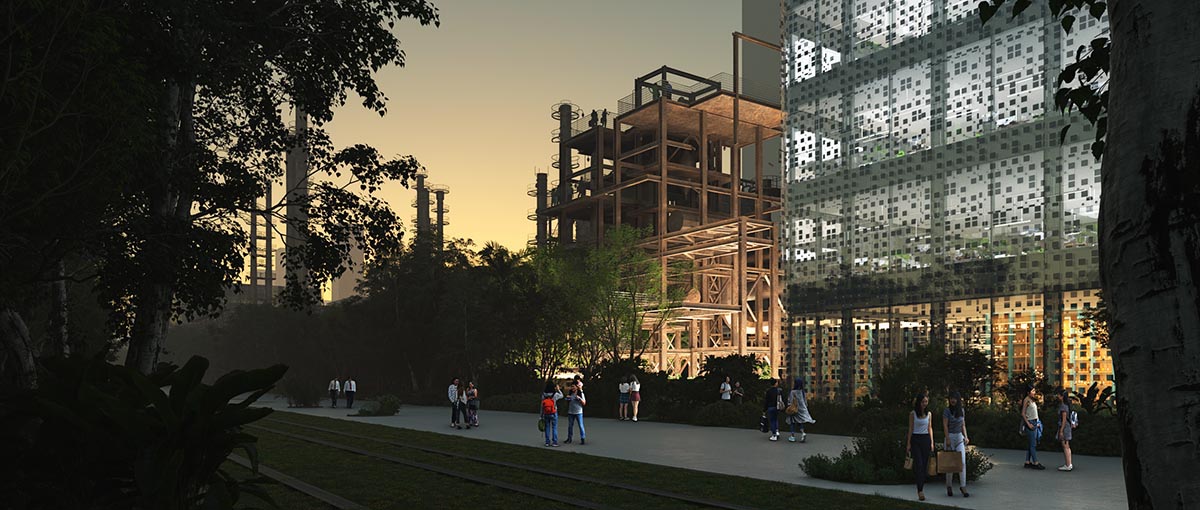
Image © MVRDV
New office buildings are situated in the southeast of the site, complementing the masterplan’s programme.
Taking into consideration energy efficiency throughout the masterplan, the studio turns every newly built building surface into an energy generator so that the park can become energy-negative in operation, contributing energy to the grid.
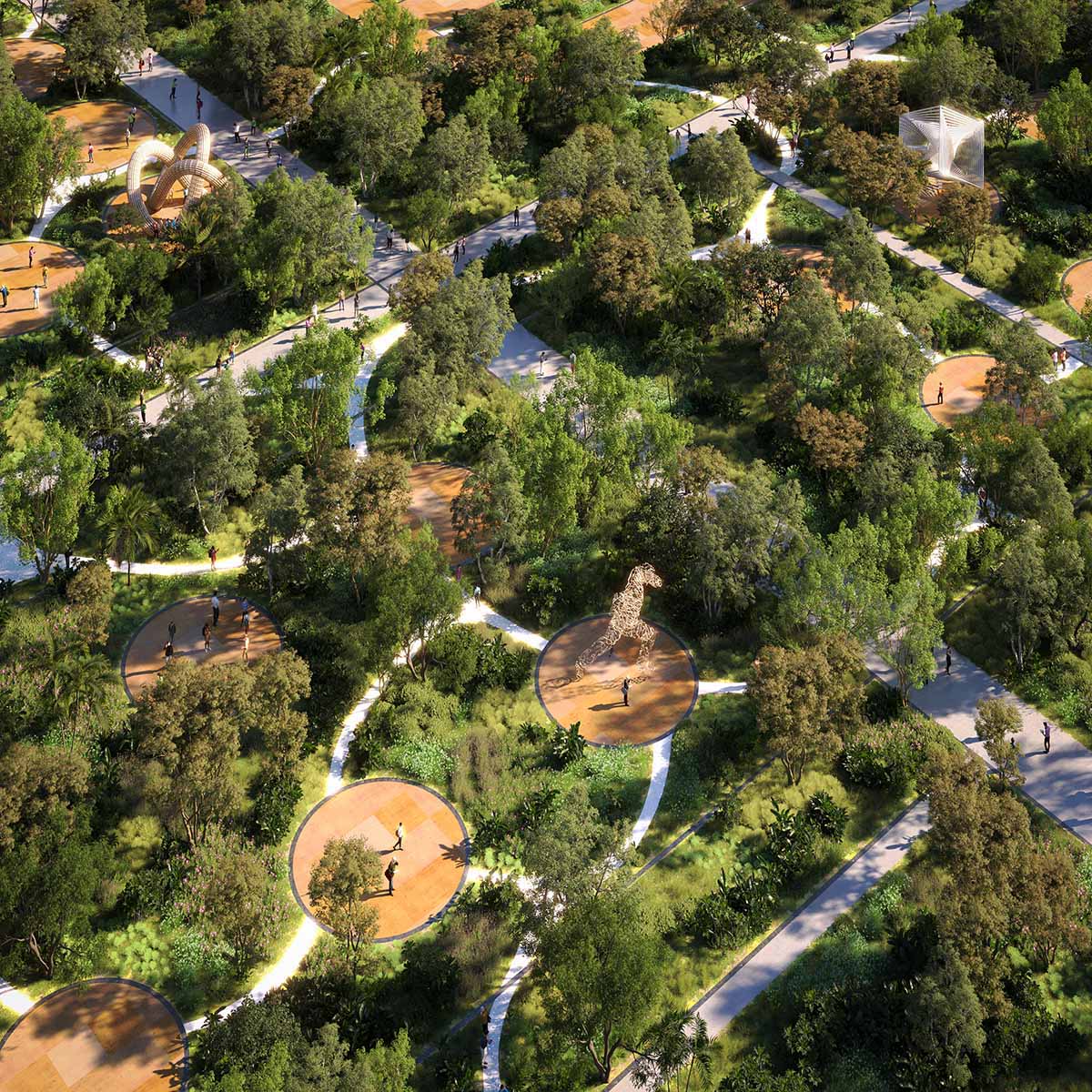
Image © MVRDV
"The park’s natural elements are designed as a parametric forest, with criteria such as a species’ contribution to shading the surroundings, food production, or biodiversity algorithmically determining its placement in the park’s forest landscape; a new symbiosis," adds Maas.
The towers of the refinery buildings are retained and integrated into the park’s landscape, with stairs and platforms providing views across the park.
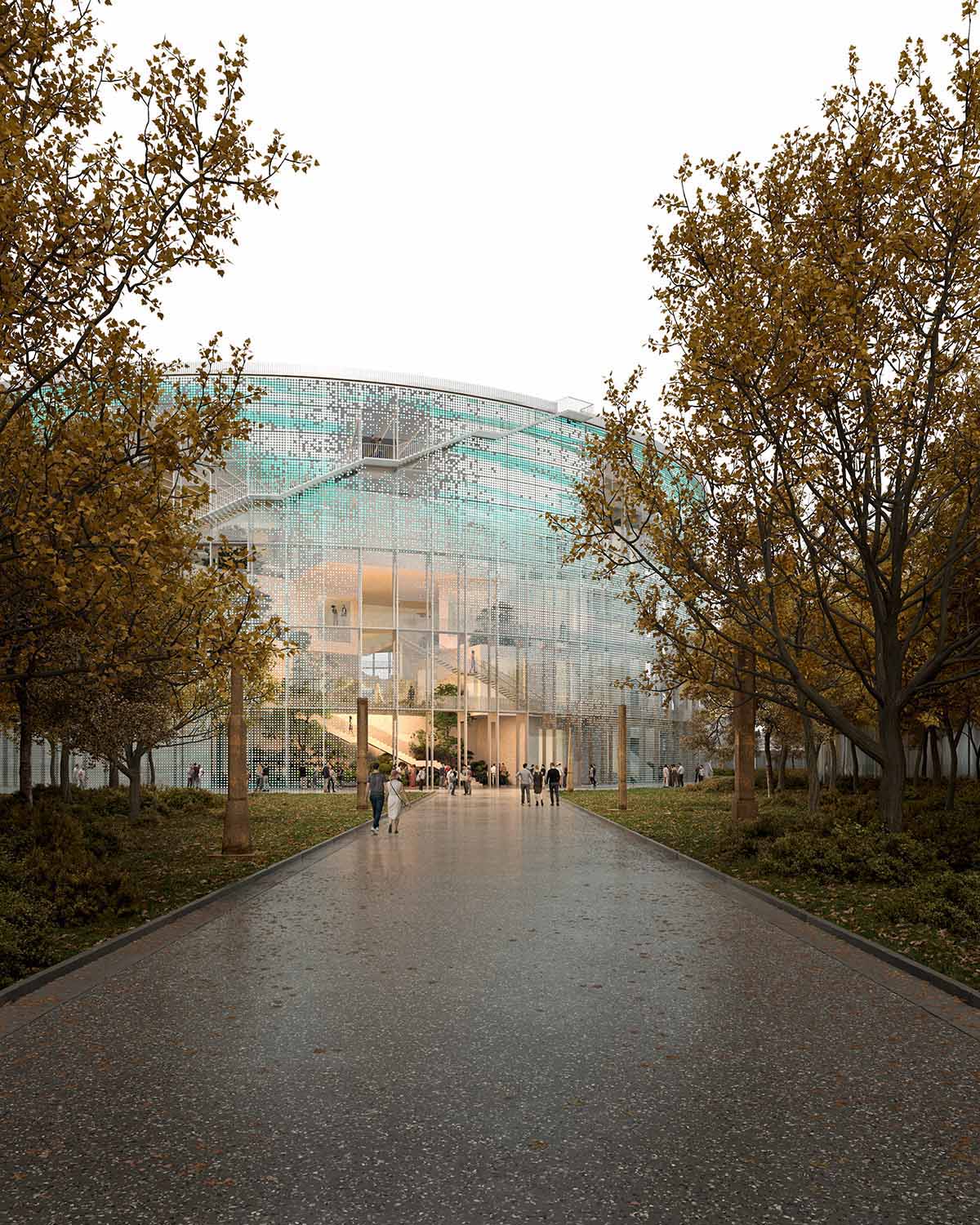
Image © Engram
The proposal also develops a catalogue of possible uses for the site’s many silos – some transformed from the original structures, some reconstructed, and some merely suggested by circles of paving where they originally stood.
From immersive art experiences to retail kiosks to enclosed gardens, these structures help to keep the park lively at all times, ensuring that there is always something to do even after dark.
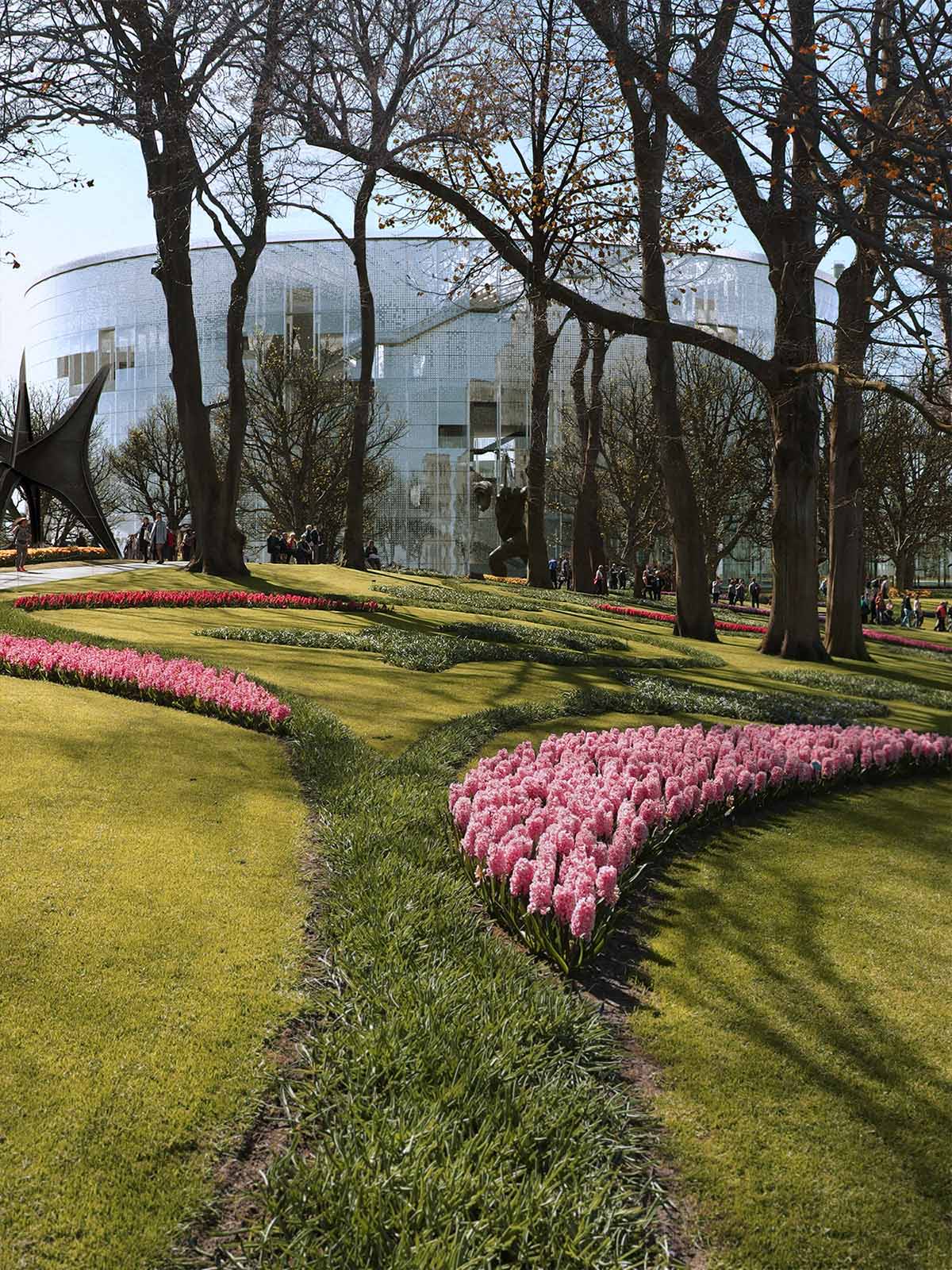
Image © Mir
The project is developed by Hangzhou Grand Canal Protection Development and Construction Group and Hangzhou Chenxiang Industrial Heritage Comprehensive Protection and Development Co. Ltd.
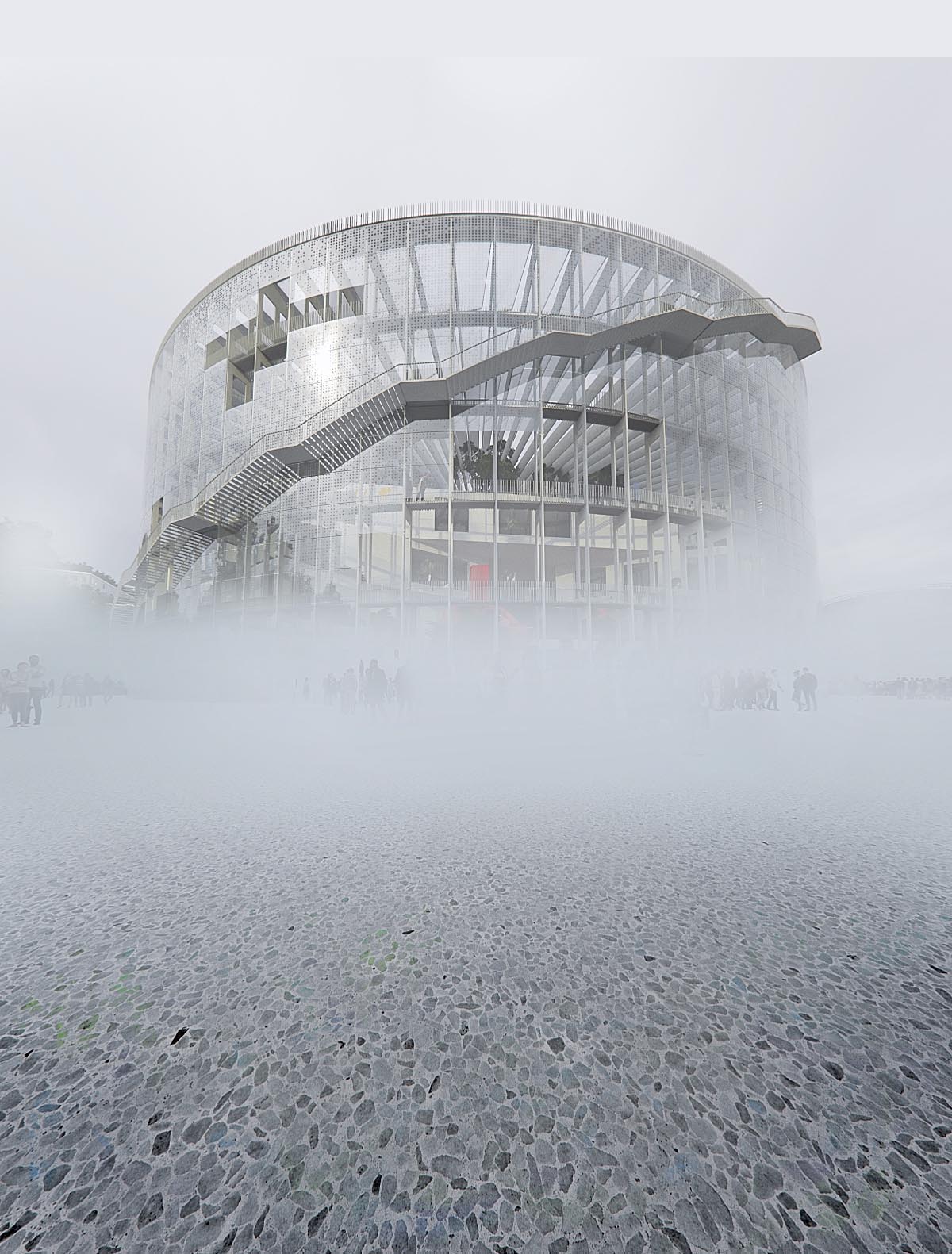
Image © Mir
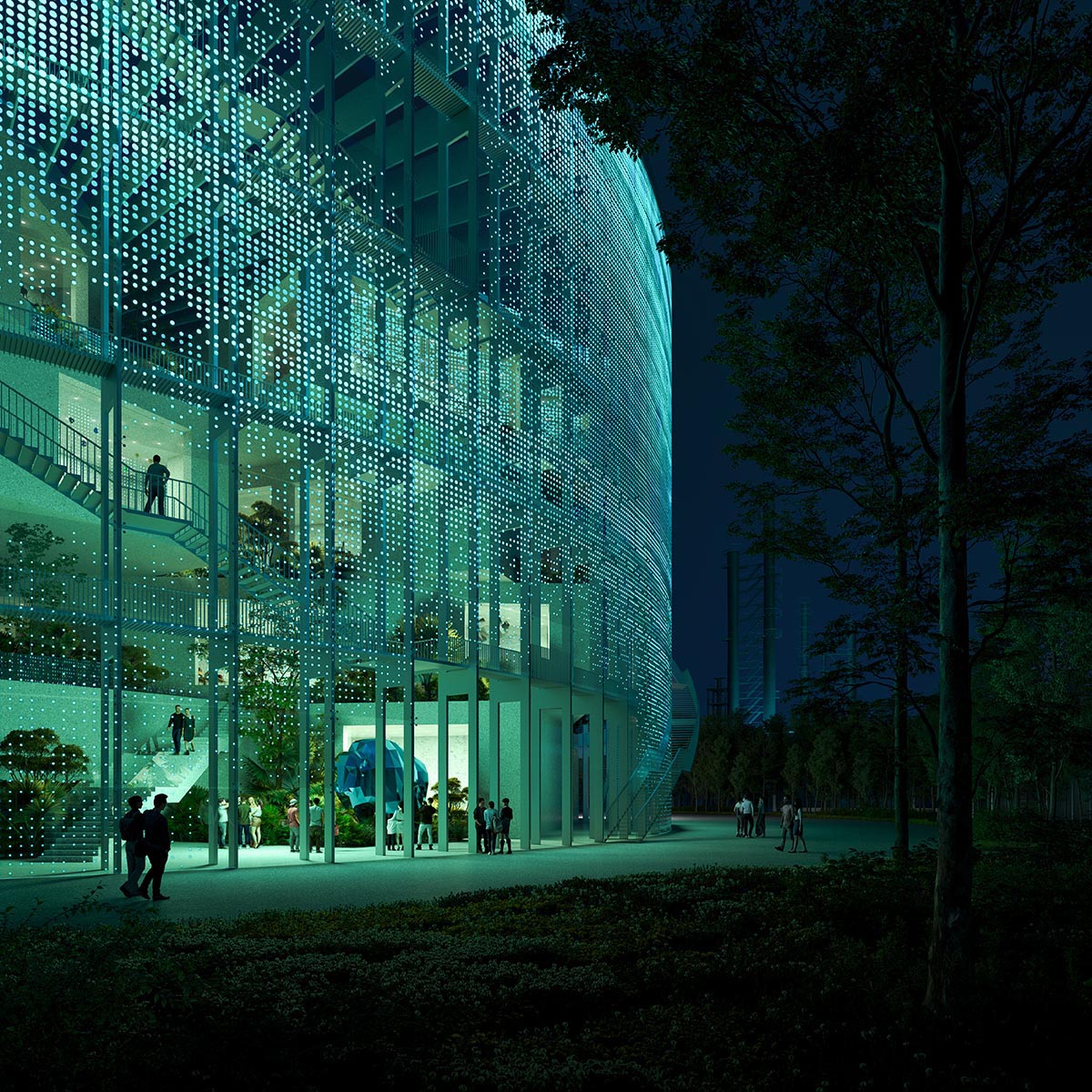
Image © Engram
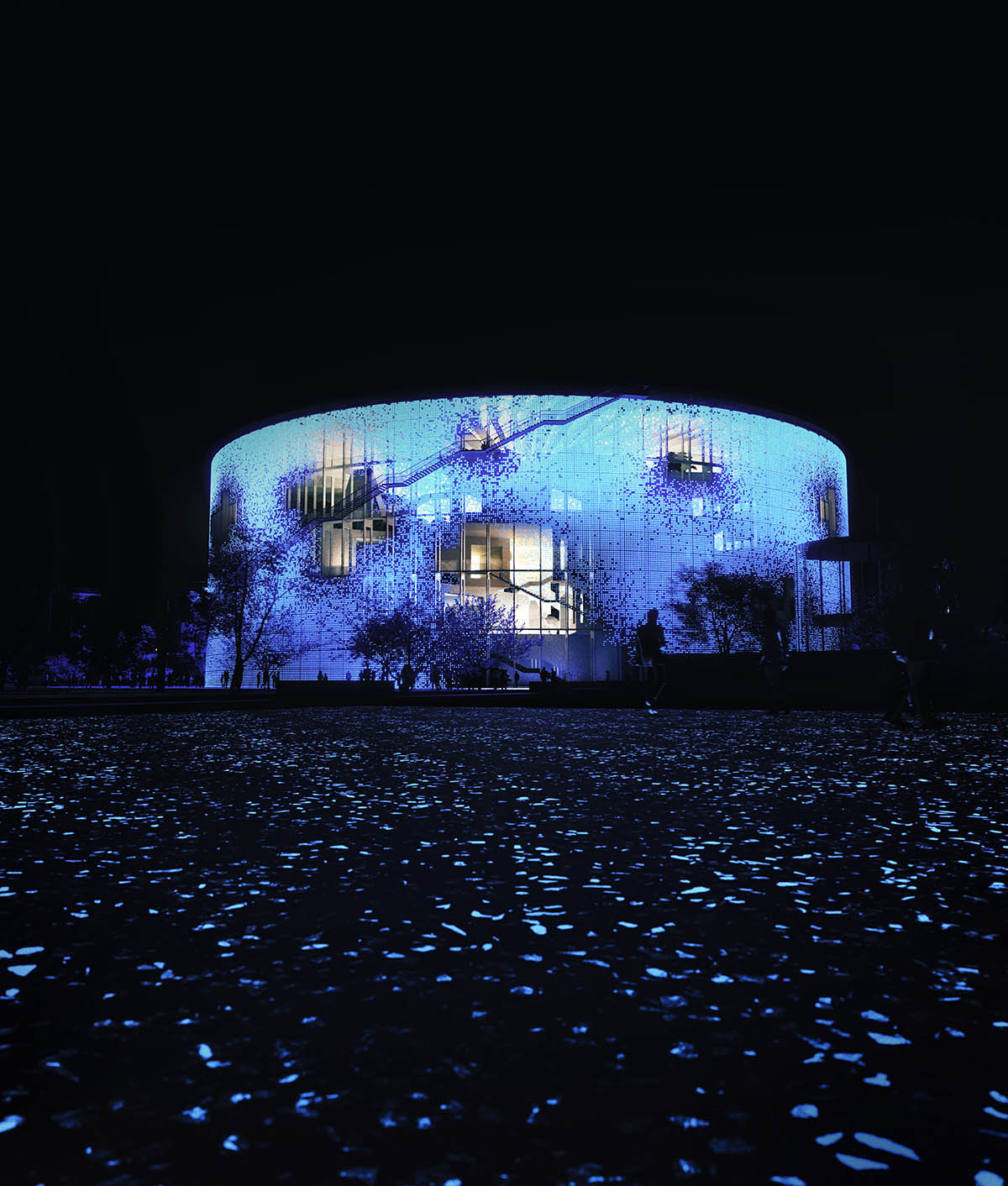
Image © Mir
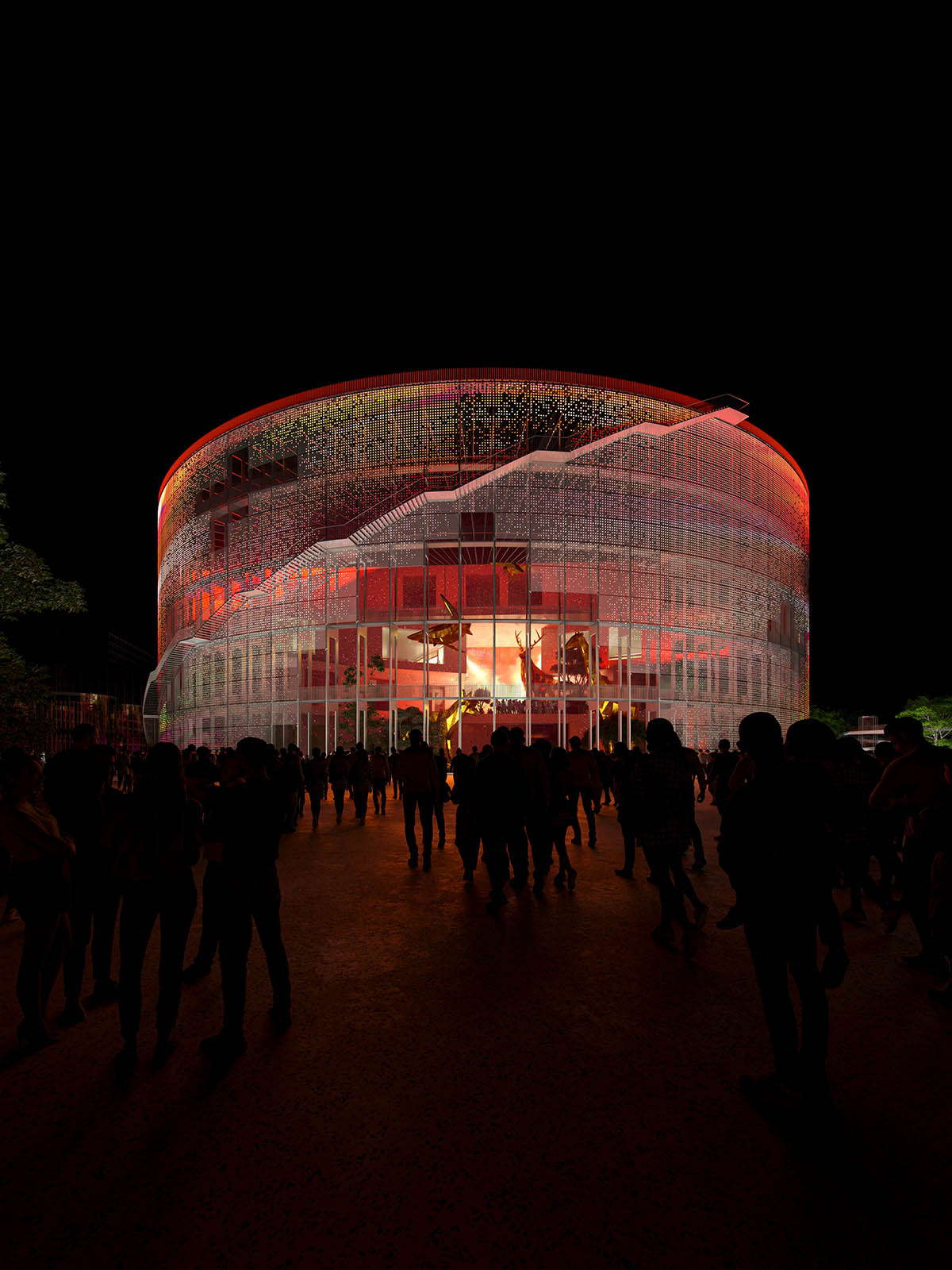
Image © Engram
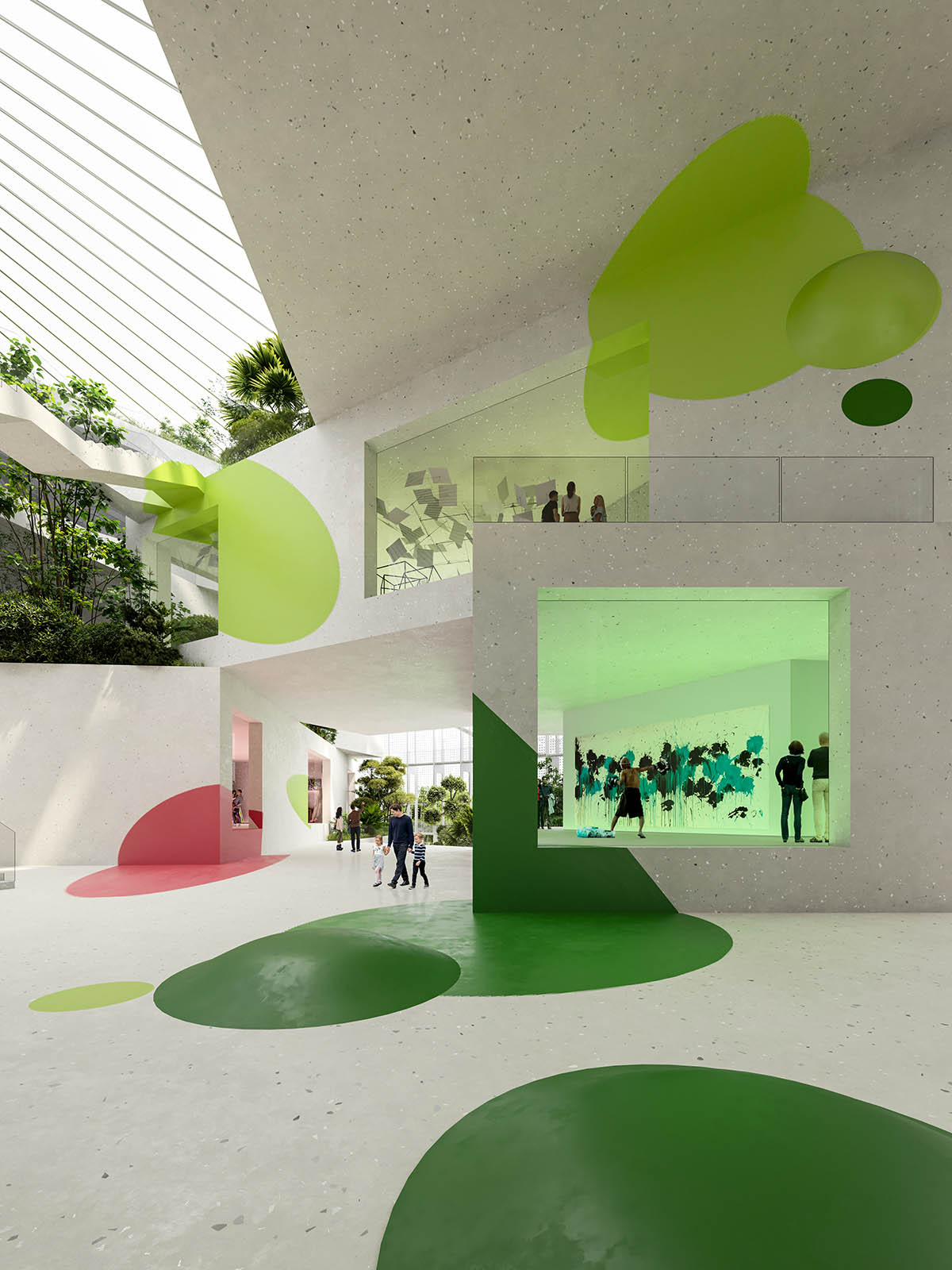
Image © Engram
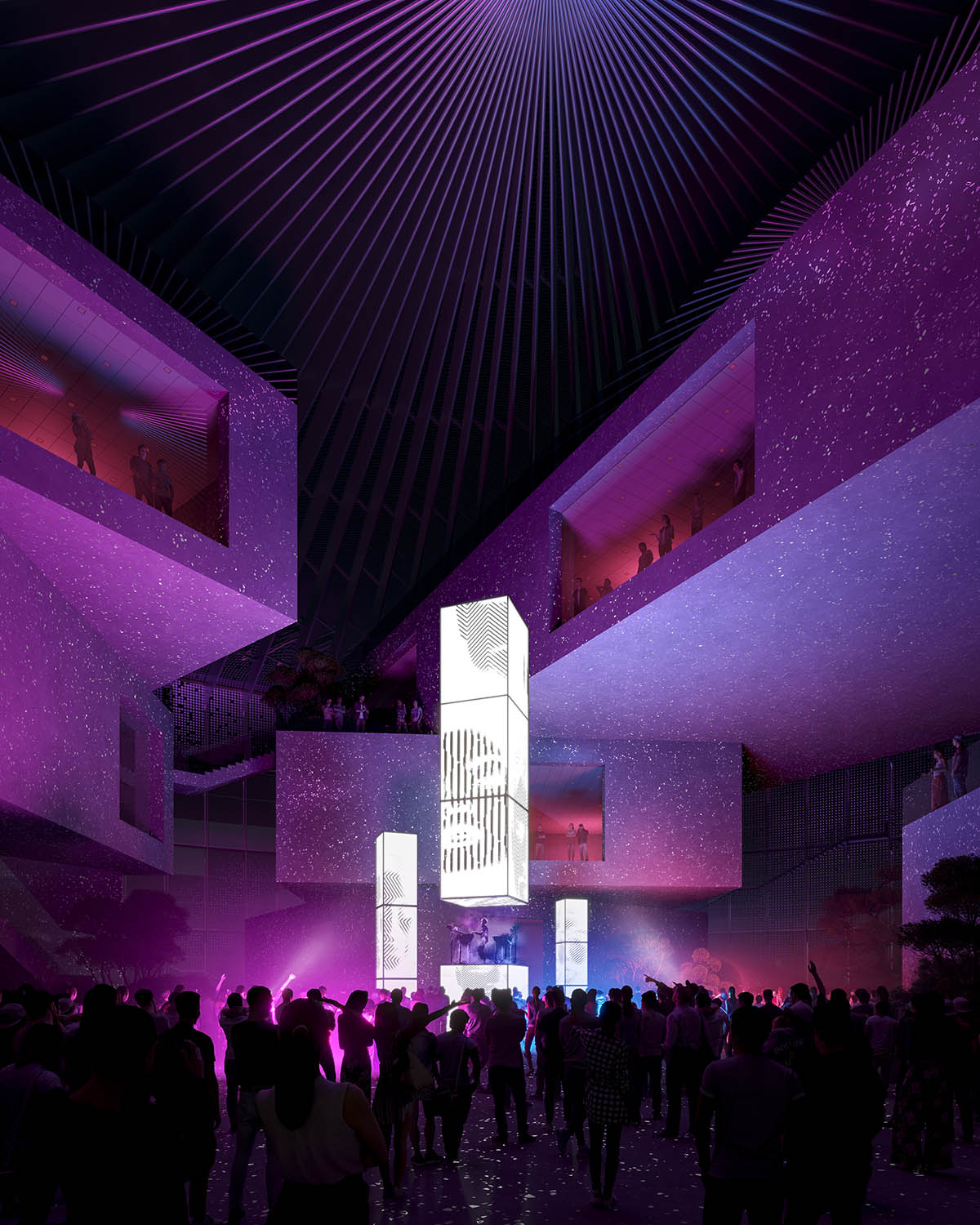
Image © Engram
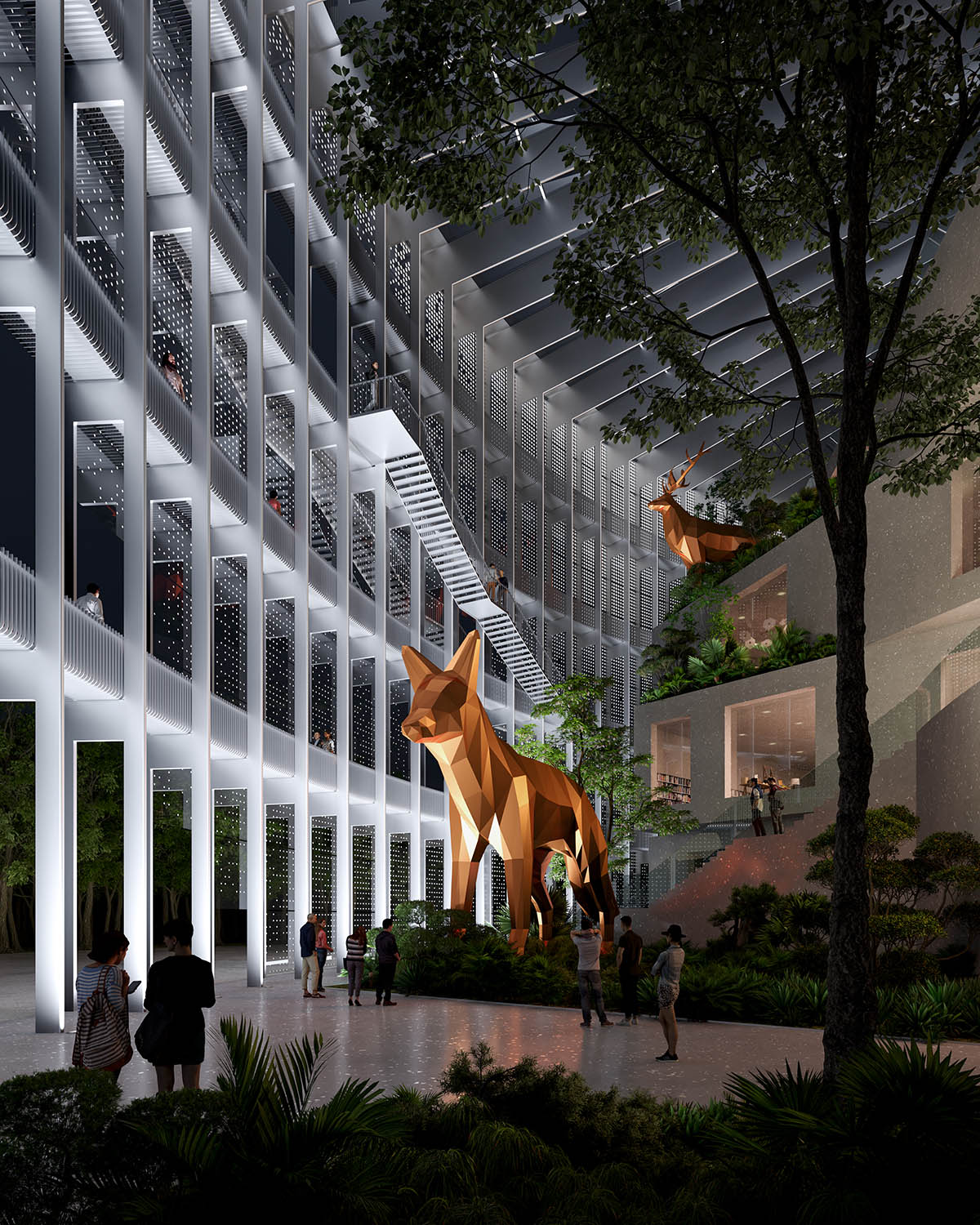
Image © Engram
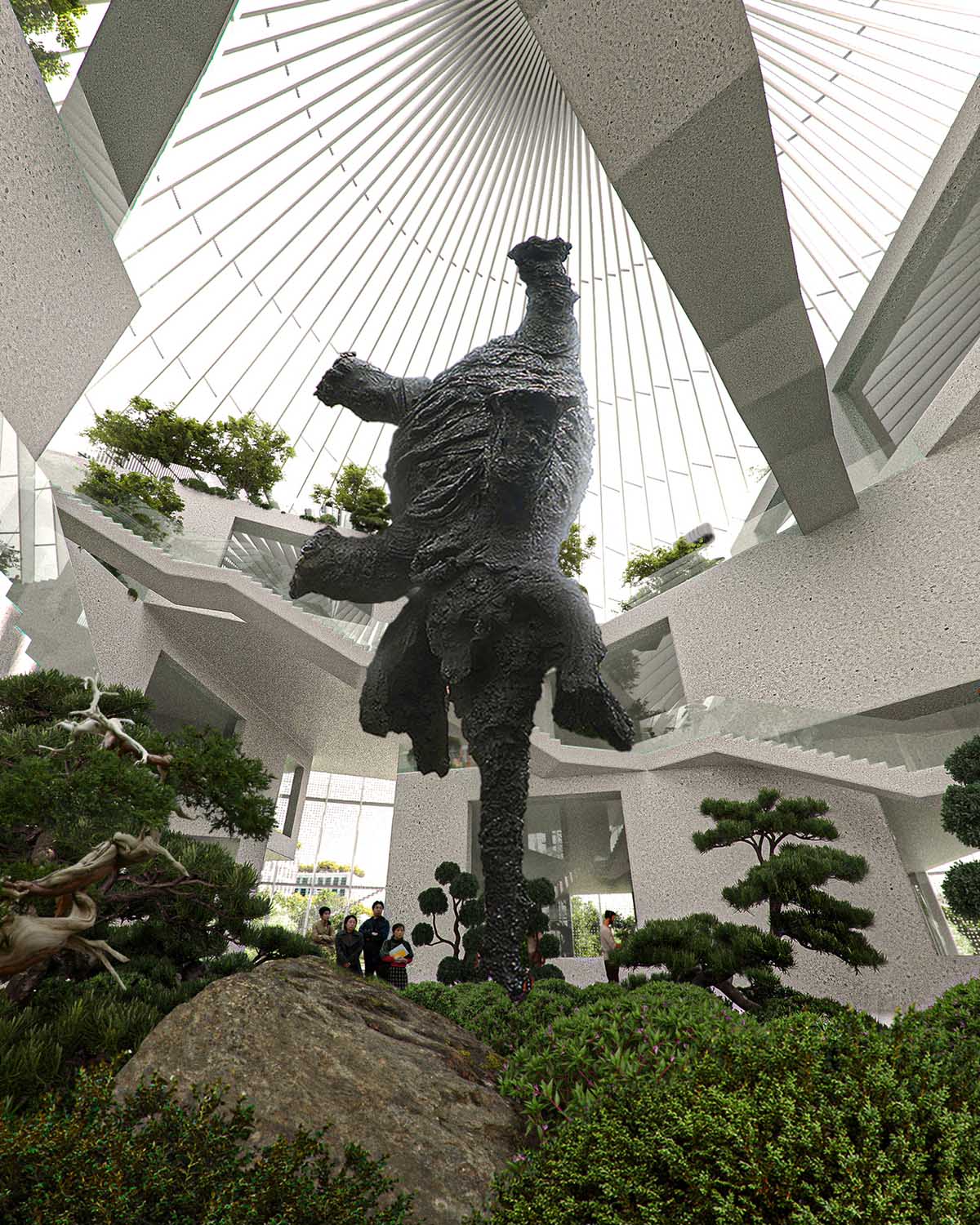
Image © Mir
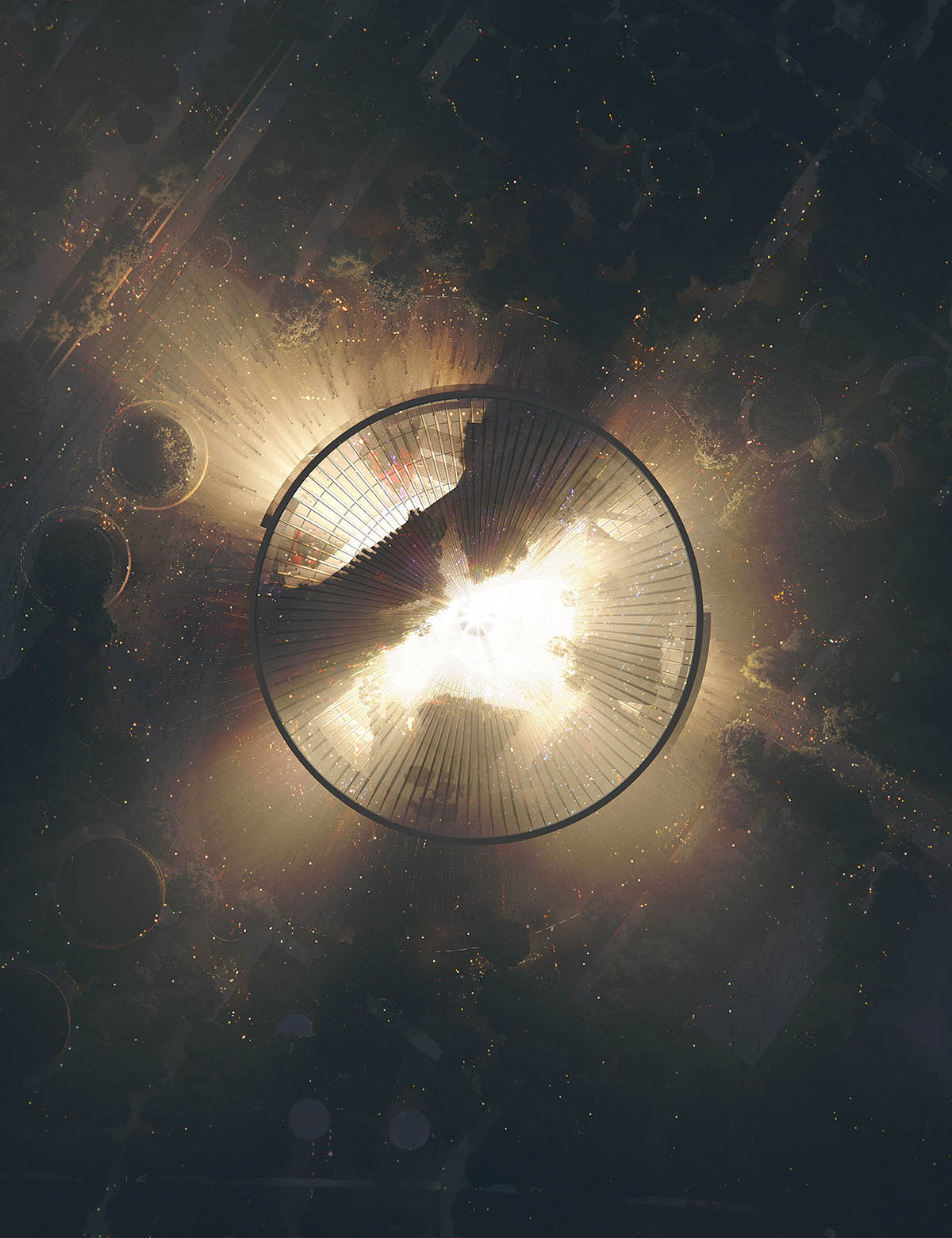
Image © Mir
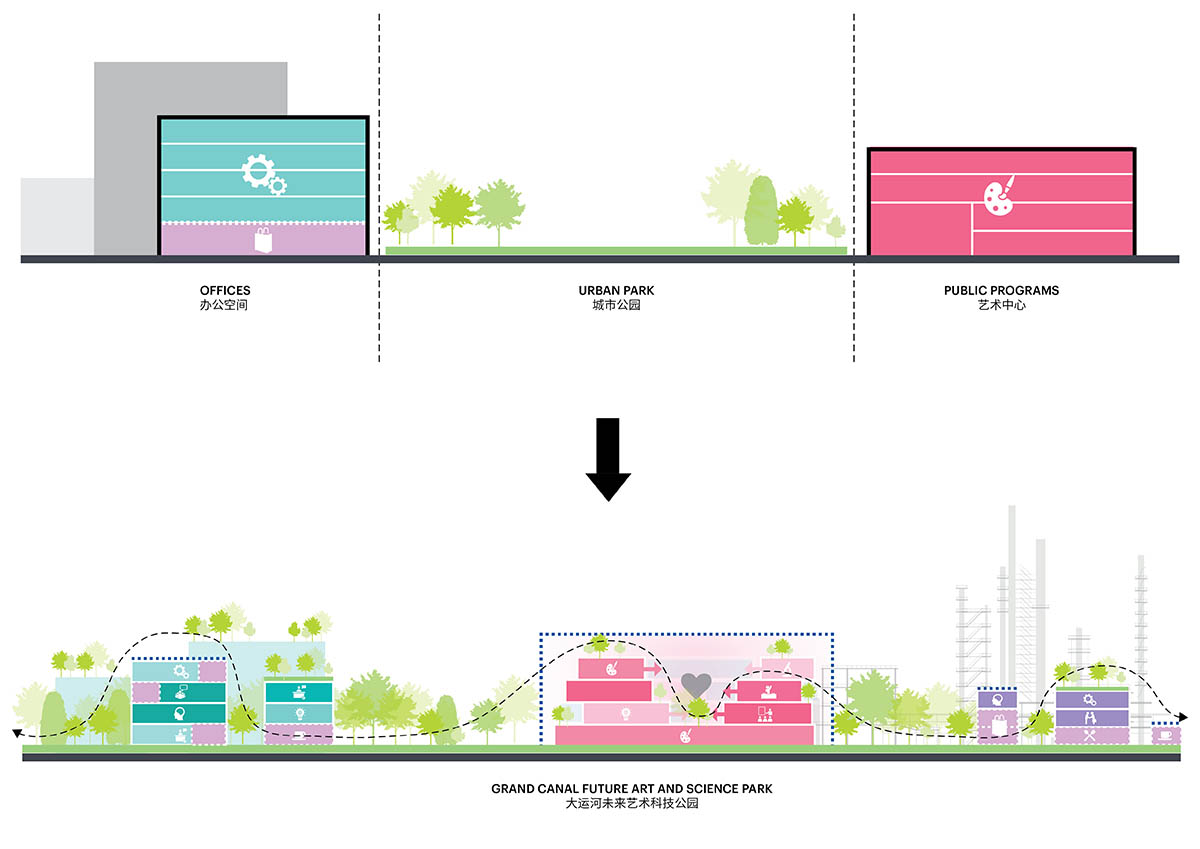
Mixed urban park concept
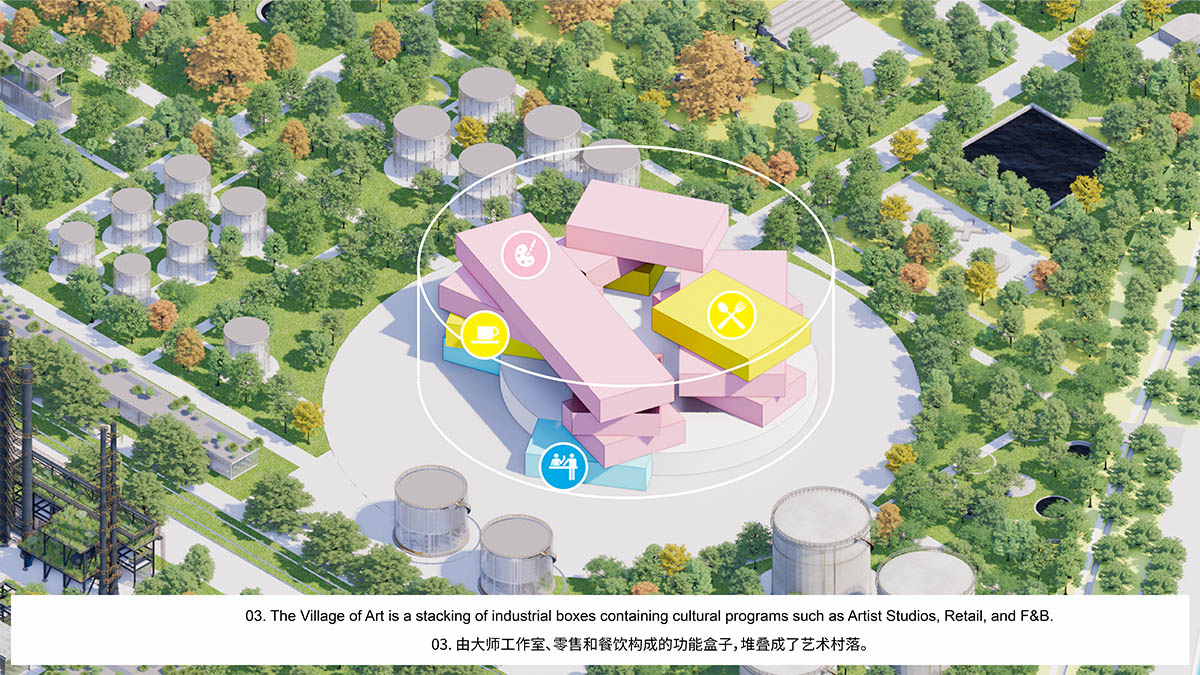
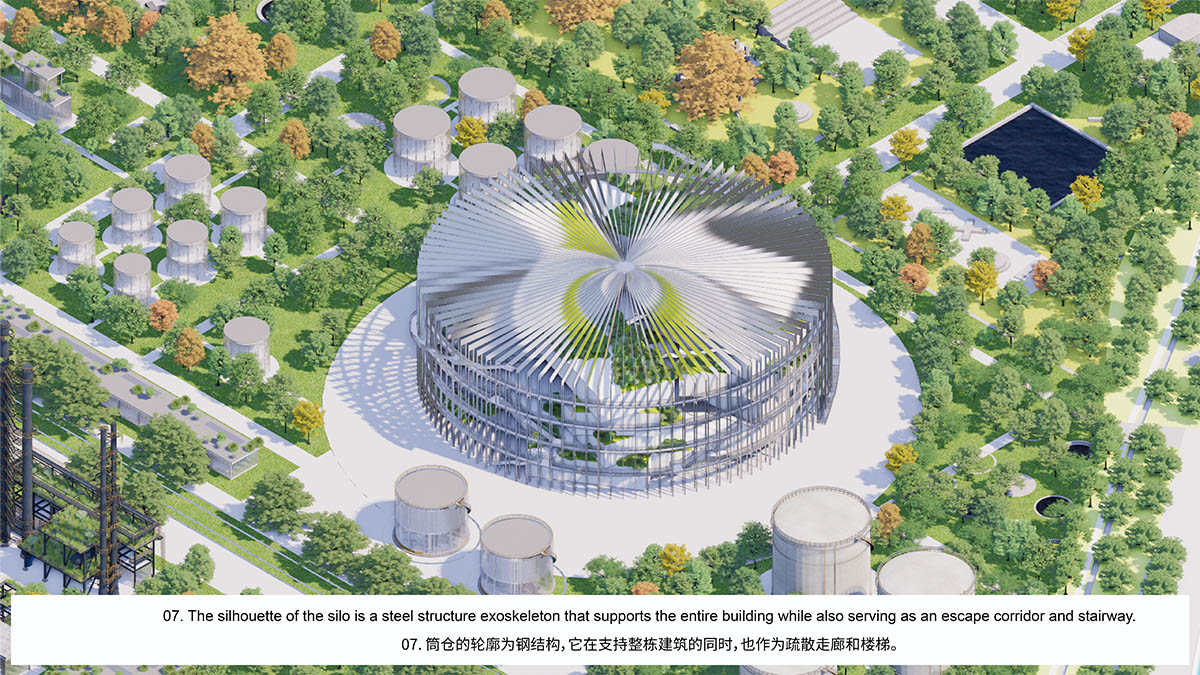
MVRDV also revealed its first Uruguayan project, combining "urban and suburban lifestyle" in a dense vertical residential tower in Montevideo, Uruguay.
The firm is also designing a masterplan for the expansion of the Noviotech Campus in Nijmegen, in the east of the Netherlands.
Project facts
Project name: Hangzhou Oil Refinery Factory Park
Location: Hangzhou, China
Year: 2023
Size and Programme: 17-Hectare masterplan (Art and sci-tech centre, Offices, retail, public park)
Architect: MVRDV
Founding Partner in charge: Winy Maas
Partner: Wenchian Shi
Design Team: Kyo Suk Lee, Cosimo Scotucci, Yunxi Guo, Americo Iannazzone, Shushen Zhang, Gioele Colombo, Kefei Yan, Samuel Tam, Jiani You, Alexander Da Costa Gomez, Ming Kong, Kevin Zhao, Sean Wang
Visualisations: Antonio Luca Coco, Lorenzo d'Alessandro, Luana La Martina, Pavlos Ventouris, Jaroslaw Jeda, Angelo La Delfa, Marco Fabri, Stefania Trozzi, Ciprian Buzdugan.
Strategy and Development: Jammy Zhu
Copyright: MVRDV Winy Maas, Jacob van Rijs, Nathalie de Vries
Partners
Landscape Architect: Openfabric
Structural engineer, Building Physics, and Environmental advisor: Buro Happold
Top image © Engram.
All drawings © MVRDV.
> via MVRDV
